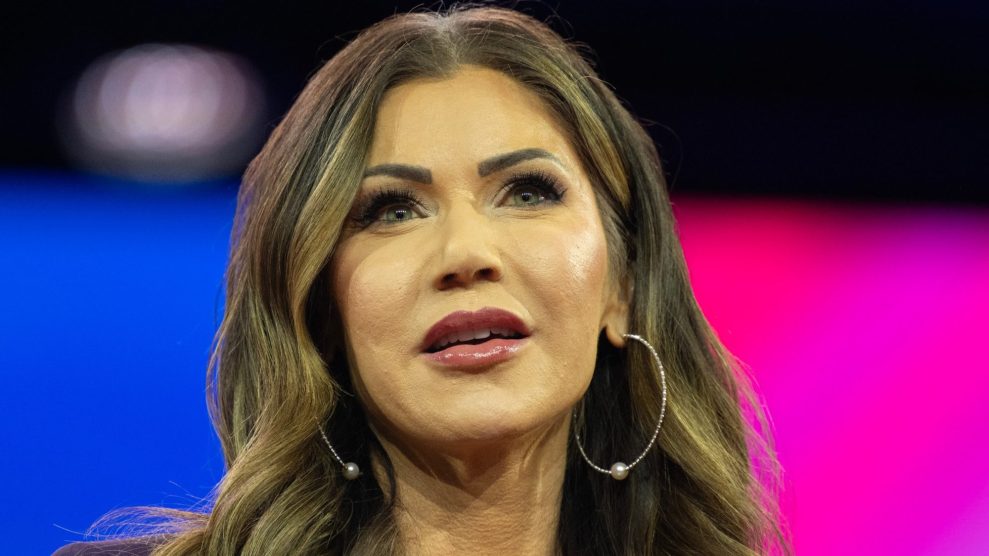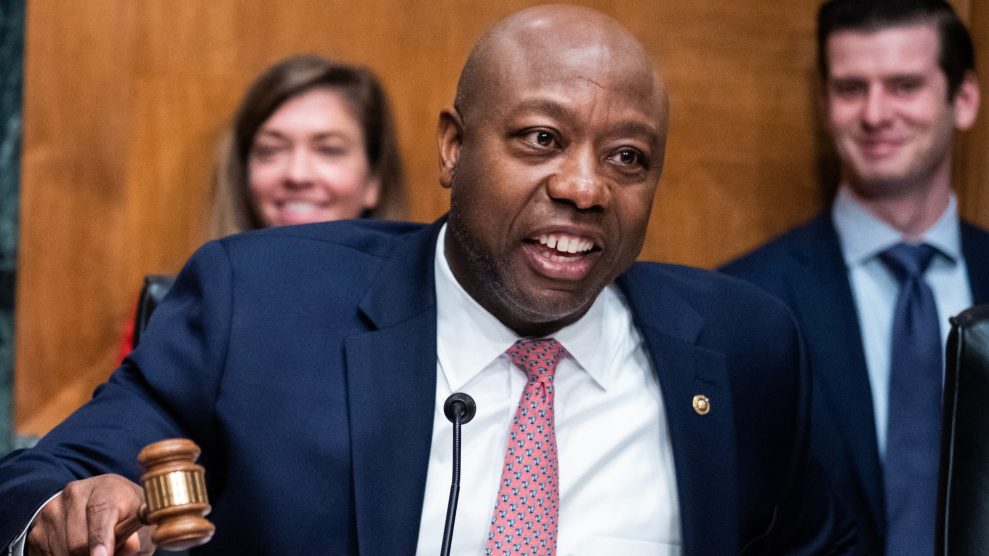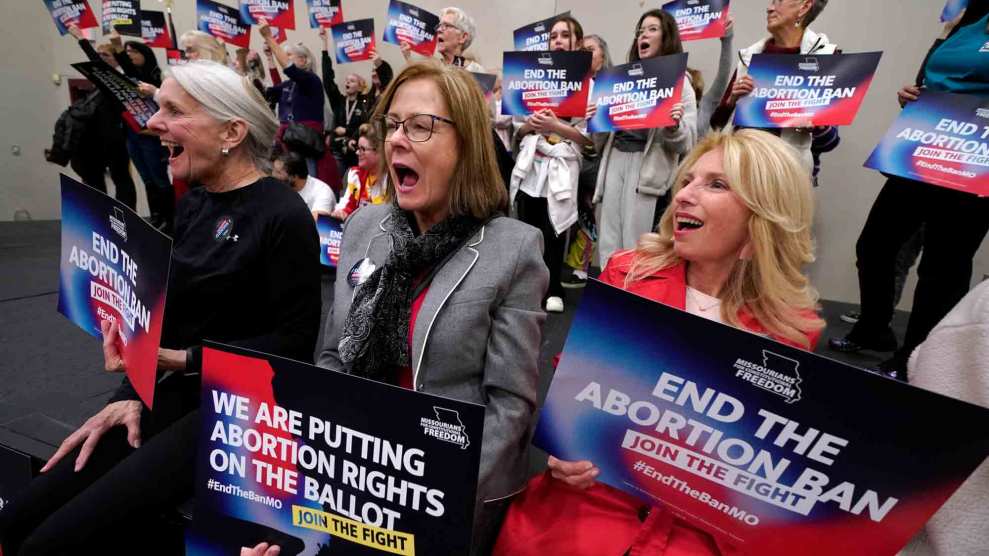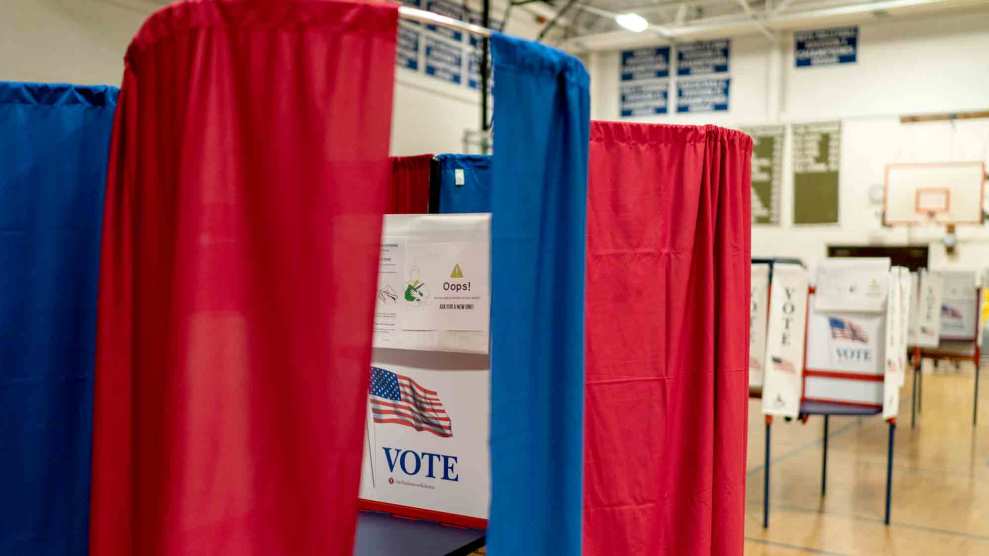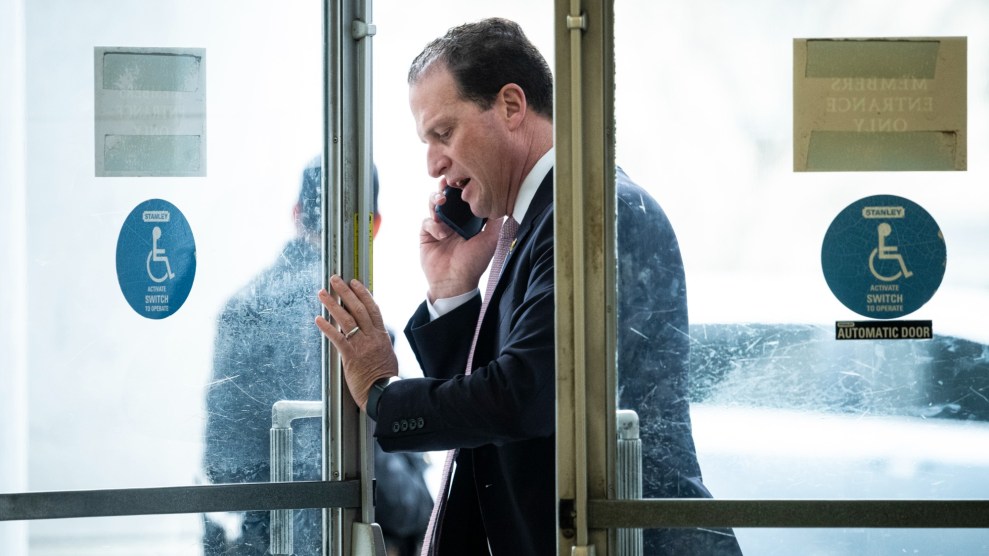In his acceptance speech at the 2004 Republican convention, George W. Bush announced that in his second term, he would “build an ownership society, because ownership brings security and dignity and independence.” Indeed, “ownership” may well bring those things, but it’s hard to tell — the term is a bit of an abstraction. As a matter of policy, most of Bush’s ownership society involves rather complex financial schemes — from private retirement accounts to high-deductible insurance policies. In order to sell this whole vision to voters, the president needed to find some way to make “ownership” more tangible.
It’s no surprise, then, that Bush latched on homeownership to do just that. On the campaign trail, the president often touted two big numbers from his first term: A record 68.6 percent homeownership rate, and 1.7 million increase in minority homebuyers. Now this was ownership. Indeed, these were the very first statistics he cited in the “ownership society” portion of his convention speech. Never mind that these numbers owed largely to the spectacularly low interest rates over the past four years, or that the homeownership rate for families below the median income level has actually dipped slightly. The president was on a roll: “There’s nothing better than somebody saying, welcome to my house; I’m putting out the welcome mat on my piece of property,” he told the National Urban League Conference on July 23rd. As rhetoric, this is savvy, putting a heartwarming face on what is ultimately a radical economic agenda. As political strategy, it’s brilliant — no one can possibly be against owning a home, after all.
Or can they? Over the past few years, a growing number of academics and policy wonks of various ideological stripes have quietly begun questioning the American Dream of homeownership. Few of them say that owning a home, in itself, is bad; rather, they note that owning a home may not be right for everyone at every point in time, and that policy should proceed cautiously — more cautiously, certainly, then Bush has done. Until the late 1990s “there simply wasn’t very much research on the actual benefits of homeownership,” says Anne Shlay, director of the Center for Public Policy at Temple University. “You had these unquestioned assumptions that homeownership was a perfect way to create wealth for low-income families, that it would create stable families, better students. But it was essentially ideology driving policy.”
In the 1990s, the Clinton administration never really had an explicit homeownership agenda, but focused instead on simply ending lender discrimination and enforcing existing regulations. Still, homeownership under Clinton rose at a comparable rate to that in Bush’s first term. But Bush, for his part, has set his sights on moving even faster, advocating even more aggressive policies for promoting homeownership: from $2.4 billion worth of tax credits for low-income families, to downpayment grant funds that would allow first-time homebuyers to sign up for mortgages without needing to put up sizeable payments up front.
But the bulk of Bush’s agenda will depend on an increase in mortgage lending, with most of the heavy lifting assigned to two mortgage market firms, Fannie Mae and Freddie Mac. (These companies act as giant risk poolers, purchasing mortgages in bulk from commercial banks, thus freeing up capital for those banks to loan out to riskier borrowers.) Both firms have since taken a variety of steps to help extend credit to minority and low-income households.
The problem, however, is that pushing loans on low-income families can have rather pernicious effects. Lowering the down-payment requirement, for instance, enables families to take out loans even if they aren’t yet financially ready to own a home and make mortgage payments. As expected, many of these home-buyers have trouble holding on to their homes. “Families that don’t have the financial resources to put together a down-payment on their own are 15-20 times more likely to lose the home on foreclosure,” says Amelia Tyagi, a financial consultant and co-author of The Two-Income Trap, a book examining causes of family bankruptcy. “If you haven’t been able to save up some money, it’s a sign that your income is too erratic or your expenses are too high to own a home.” Indeed, the percentage of mortgage loans that result in foreclosure have risen from 1.24 percent during the last three years of the Clinton administration to 1.46 percent during the Bush administration. Yet Bush has proposed millions to expand down-payment subsidies, waiving it entirely in some cases.
Increasing homeowner credit to low-income families also, quite naturally, depends on an increase in “subprime” loans — loans made to borrowers without good credit histories at much higher interest rates. In 2001, these accounted for over 13 percent of the loans made to low-income, minority communities. That in itself is certainly not a bad thing (although more than 16 percent of subprime mortgages were delinquent or in foreclosure last year). The real trouble is that expanding the subprime lending market to low-income communities has made it easier for “predatory” lenders to gain access to uninformed, elderly, or minority borrowers who can be swindled into disadvantageous loans or unaffordable refinancing schemes.
How manageable predatory lending really is, however, depends on whom you talk to. Robert Litan, an economist at the Brookings Institution, notes that “there are sensible ways to reduce predatory lending” — by enforcing existing regulations — without doing away with subprime loans altogether. Others think that regulations can only go so far. “Trying to crack down on this stuff is like chasing down rats,” says Tyagi. “We’d be better off just getting rid of the whole system and putting caps on lending.” Regulating interest rates, however, would severely limit the market for lending and dissuade private banks from lending to low-income homebuyers.
More importantly, though, the sort of “demand side” policies Bush is proposing do very little to increase the actual supply of affordable homes, which has grown tighter in recent years. During the 1990s, the median price for a single-family home rose nearly 45 percent; the poorest 40 percent of Americans couldn’t keep up, with income growth at just 35 percent. Of the new housing units being built over the past ten years, less than 30 percent have been affordable to households earning 80 percent or less of median income in the area. Mere loans will do very little to close this gap. Researchers have found that homeownership remains unaffordable for about 80 percent of all renters — including a whooping 21 million renters who could not get mortgages even under the loosest of underwriting standards.
Those houses that are affordable, meanwhile, often require costly repairs, or are located in poor neighborhoods plagued by crime and unemployment. In Baltimore, homes in need of major repairs are often “patched up” and sold at inflated prices to low-income families. In the South, 40 percent of low-income buyers were steered into trailer park-style homes on leased land. A family can hardly expect the sort of social benefits associated with owning a home if it’s living in a bad neighborhood.
Why, then, is the Bush administration relying so heavily on lending? One answer may be that, over the past few years, lenders have discovered that lending to low-income homebuyers may actually be just as profitable, if not more so, than other forms of lending. Low-income borrowers tend to take out loans with small down-payments –thereby increasing their monthly payments — and, because they have less income mobility, are less likely to refinance their loans or make early prepayments.
In fact, a recent study by economists Robert Van Order and Peter Zorn, examining loans purchased in the 1990s by Freddie Mac, found that these “prepayment savings” may offset the higher risk of lending to low-income owners. Not surprisingly, Bankers are growing eager to get in on the bonanza, and aren’t shy about coaxing the president to steer loans their way. It’s no accident that the real estate and mortgage industries ranked among the top contributors to Bush’s campaign in the 2004 election. For his part, Bush appears more than happy to employ a free-market solution to housing policy.
A lending-oriented housing policy, unfortunately, is fraught with hazards for the lender. But no one ever seems to ask why the government should pursue homeownership so aggressively. Perhaps, after all, it’s not the unalloyed good it is presumed to be. Figuring out the actual social benefits of low-income homeownership, after all, can prove quite difficult. Research on the effects of owning a home has traditionally focused on middle and high-income families, and as one would expect, those families tend to be healthier, more civic-minded, and their kids perform better in school. But correlation is not causation: these results could come from those families having higher incomes, better education, or being at a more stable stage in the family life cycle. “We’re not at the point were we can say that homeownership actually causes changes in families-let alone low-income families,” says Shlay.
Researchers are also questioning whether owning a home is a viable wealth-enhancing strategy for low-income families. To be sure, the median wealth of low-income homeowners is more than twelve times that of renters with similar incomes-and most of that wealth comes from owning a home. But again, renters and owners tend to be very different people to begin with, often at different stages of their family life cycle, and with very different financial situations. There’s no way to generalize about how “good” an investment owning a home is — much of it depends on when a family enters the market, how long it holds the property, and various local market conditions. Policymakers may treat owning a home as a clear cut wealth-building strategy, but in truth, “relatively little is known about the financial performance of low-income homeowners,” according to Eric Belsky, executive director of Harvard’s Joint Center for Housing Studies.
Meanwhile, a good number of economic problems can befall those low-income families who own homes. Even if their mortgage payments stay relatively low, families can find themselves assailed by insurance costs, property taxes, and rising utility bills. As well, low-income families are more likely to face financial pinches and go borrow against the equity in their home, thus diminishing any wealth they may accumulate. In fact, several studies have shown that low-income families save less than renters, giving them a smaller cushion against income loss or other calamities.
Pointing all this out is not to say that low-income families shouldn’t own homes; it merely suggests that some families may not be ready. “For many low-income families, renting makes much more sense as an option,” says Sheila Crowley, president of the National Low Income Housing Coalition. Shlay agrees: “Rental housing is too often viewed as anathema; it’s given a low-class status. But renting can be a perfectly good interim step towards homeownership.”
Unfortunately, over the past four years the Bush administration has slashed even the most successful rental assistance programs — from Section 8 Housing Vouchers (which subsidized rents for low-income families) to the HOPE VI Program (which helps renovate distressed public housing). If the idea is to move families out of rentals and into their own homes, it’s working — though at a cost. “We’re finding that people get pressured into buying a home before they’re ready, because they’ve found that it’s difficult to find good rental housing,” says Crowley. But even that’s only half of the story: More frequently, with the vast majority of renters unable to qualify for even the most generous homeowner loans, the cuts will simply leave many low-income families struggling to get by. For these people, the “ownership society” is forever out of reach.
When it comes right down to it, Bush’s homeownership agenda — that heartwarming face to the “ownership society” — has all the downsides we’ve come to expect from the rest of Bush’s economic agenda. Based on fuzzy research and unchecked assumptions? Check. Leaves millions of low-income Americans behind? Check. Pushes risk and debt on Americans? Check. “It’s the same story with homeownership as it is with any other ‘ownership society’ program,” says Crowley. “There’s a lot of potential gain to be had, but you’re also asking individuals to take on a lot of risk.”
